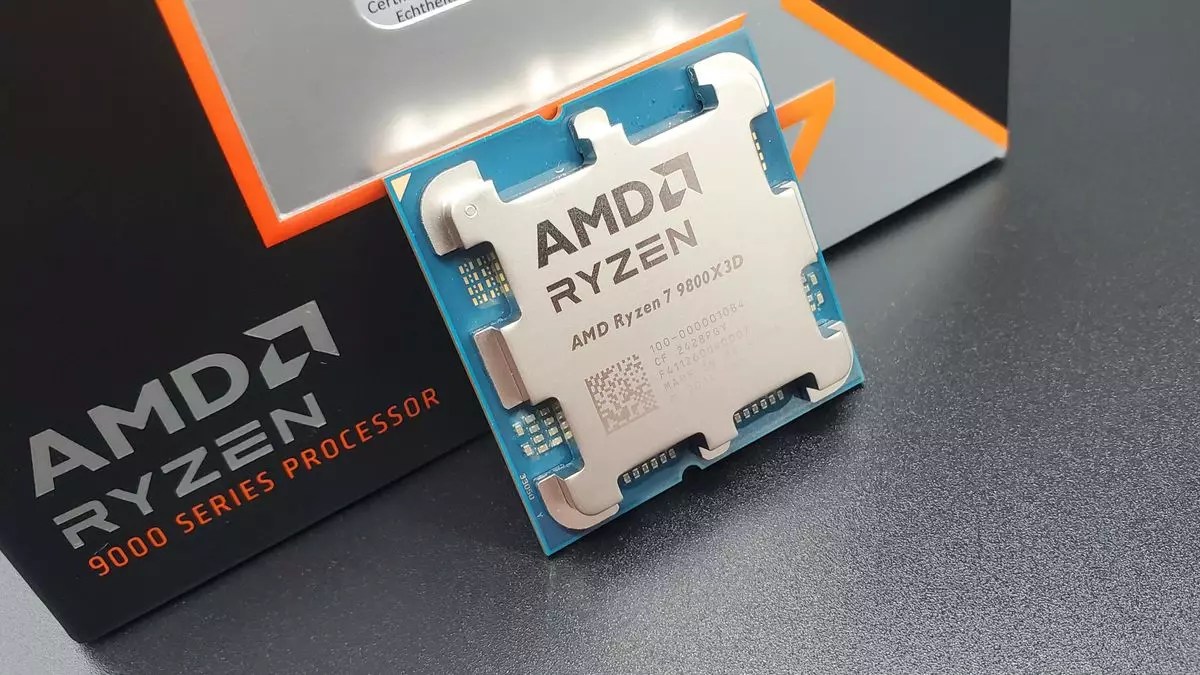As the technology landscape evolves, the competition between AMD and Intel remains vigorous, particularly in the CPU market. Recent months have been marked by the launch of fresh CPU line-ups: AMD introduced its eagerly awaited 9000-series ‘Zen 5’ processors, while Intel rolled out the less impressive Core Ultra 200S ‘Arrow Lake’ series. These advancements are noteworthy not only for their technical specifications but also for their implications on market demand and supply dynamics.
AAMD’s Impression on the Market
AMD’s 9000-series has made waves since its launch, with AMD CEO Dr. Lisa Su reporting a significant sell-through during the holiday season. This record demand for AMD’s gaming CPUs hints at a potent market presence that AMD has cultivated over the years. The Ryzen 7 9800X3D, in particular, has been touted as the leading gaming CPU on the market, capturing consumer interest alongside high-performance gaming rigs. However, as much as the impressive demand for the Ryzen 7 9800X3D may seem indicative of strong brand loyalty and superior product offerings, it’s essential to acknowledge that stock availability plays a crucial role. The ongoing scarcity of these chips suggests that demand is outpacing supply, further complicating the narrative.
The complication of stock management cannot be overlooked. Just because a product is flying off the shelves does not inherently mean it reflects pure consumer desire; it often raises questions about supply chain efficacy. While AMD celebrates its high sell-out rates, the reality may also hint at production challenges. The infamous “paper launch” phenomenon, seen with Nvidia’s recent RTX line-up, serves as a cautionary tale. In AMD’s case, while the 9000-series was not labeled a paper launch, the ongoing shortage makes one rethink the company’s operational capabilities amidst this fervent demand. It raises concerns: is AMD successfully stimulating consumer interest, or is it grappling with its ability to keep devices adequately stocked?
On the contrary, Intel’s latest offerings have not set the market alight. The Core Ultra 200S series, released simultaneously with AMD’s breakthrough chips, has been viewed as a letdown. Many industry followers have noted that the innovations touted in this new line fall short of expectations. Intel’s faced ongoing stability issues with previous generations, leading to skepticism that hinders consumer confidence—an entirely different situation compared to AMD’s upward trajectory. With many of Intel’s offerings failing to feature groundbreaking advancements, AMD appears to be benefiting from a more favorable competitive landscape.
The implications for both brands are intriguing. AMD’s recent success may seem like a testament to their engineering prowess, but it would be an oversimplification to disregard the role of Intel’s missteps on consumer choice. The CPU landscape is dynamic, and while one company thrives, the other seems to falter, reaffirming the old adage that competition breeds innovation—or, in this case, stagnation.
Mobile Processors: A New Battlefield
While desktop processors are presently the arena for grappling between these illustrious brands, the mobile sector is another dynamic battlefield. AMD has made strides with its AI 300 ‘Strix Point’ mobile processors, finding their way into laptops and innovative handheld devices, such as the OneXPlayer OneXFly F1 Pro. Conversely, Intel has also made inroads with its Core Ultra 200V ‘Lunar Lake’ processors, which shine in efficiency but seem to lag in gaming performance against AMD’s formidable offerings.
What’s notable here is the apparent closer competition in the mobile realm compared to desktops. As both companies tailor their products for different environments, the delineation between AMD and Intel becomes less clear. Nonetheless, Dr. Su’s comments about AMD’s expected performance in the desktop sector allude to a continuation of dominance there, paving the way for an aggressive marketing and product stocking strategy.
As we look ahead to the upcoming quarters, the pulse of the market remains crucial — with AMD riding a wave of affirmative receptions while Intel grapples with regaining its footing. AMD eagerly anticipates fulfilling consumer demand for the Ryzen 7 9800X3D chips, urging for stock replenishments to continue reaping the benefits of solid consumer interest. As such, both companies face critical strategic decisions that will determine not only their current standing but their future relevance in the ongoing CPU race.
The back-and-forth nature of this rivalry underscores the necessity for both AMD and Intel to innovate, adapt, and respond to market fluctuations efficiently. While AMD appears to be in a particularly strong position, the future market dynamics, fueled by consumer demand, stock levels, and competition, will ultimately dictate the trajectory for both technology giants. The stakes remain high, and for tech enthusiasts and gamers alike, the anticipation for what comes next is palpable.


Leave a Reply